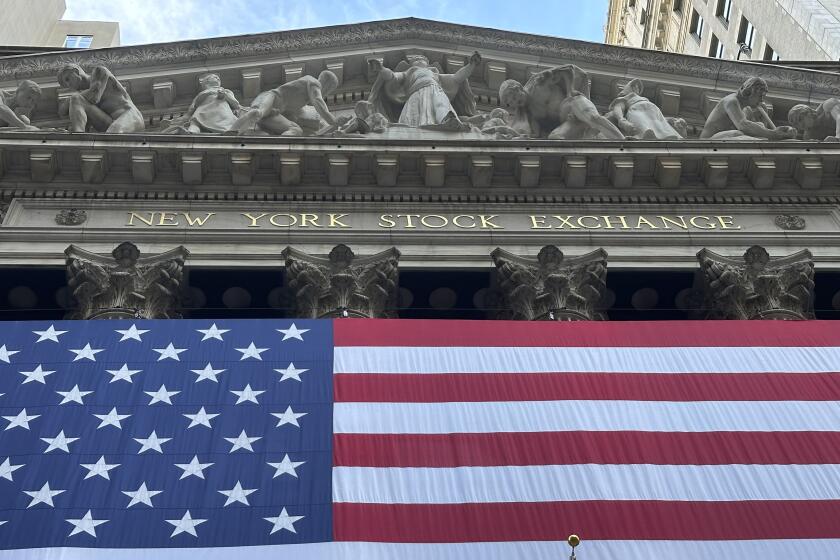Downtown L.A.’s real estate transformation is building speed
Downtown Los Angeles has changed dramatically in the past dozen years from being known as a high-rise office park ringed by poverty to an actual neighborhood where thousands live and more come to play.
Its transformation into a fully rounded 24-hour urban center is far from complete, but the process is well underway and accelerating, said Derrick Moore, a property broker who finds space for such street-level businesses as restaurants, shops and bars.
Moore, who works in the downtown office of Avison Young Inc., has tracked the local retail real estate market since 2000. Back then Staples Center had just opened near the L.A. Convention Center, but the arena struck many as an isolated outpost even though it was only a few blocks outside the office district.
Why was there so little street life after sundown? What kept businesses out of the heart of the second-largest city in the country?
I called on many retailers in those days who said, “You’ve got to be kidding me. It’s a 9-to-5 environment.” You worked there and then left. If you were going to extend your evening, you thought about many other areas of town first.
Even so, there have been hundreds of thousands of people working downtown for decades. What else kept name brands away?
Downtown was thought of as a discount market. Discount jewelry, discount fashion, discount flowers, discount toys. With their reputation to protect, it just didn’t appeal to certain prominent retailers that manufactured and sold non-discounted goods.
The city’s adaptive reuse ordinance of 1999 is widely considered a key to downtown’s renaissance because it made it easier to turn old buildings to new uses. Were there also big real estate developments that fanned the recovery?
There were projects that were absolutely catalysts for bringing regional and national attention downtown, like Staples and L.A. Live. To have Ralphs supermarket come back downtown after a 50-year absence and make it [an upscale] Fresh Fare proved this market would sustain offerings we would expect to see on the Westside.
They still wouldn’t come if people didn’t live downtown. New residential construction and conversions of old office buildings to apartments and condos must have helped.
Change came as people moved in. We used to tell retailers not to look at the 2000 census because a demographic report commissioned by the Downtown Los Angeles Center Business Improvement District in 2006 showed a new affluent population here. Retailers had the chance to be part of a city as great as Los Angeles rebuilding its core. That resonated with a lot of them.
Especially restaurateurs?
Yes, a lot great chefs realized we had a sophisticated audience that can appreciate fine dining in a casual atmosphere. We now have a concentration of James Beard candidate chefs and restaurants that make top 10 lists in Esquire, GQ and Food & Wine.
OK then, downtown has abundant dining options but it doesn’t have the kind of stores and boutiques that are common in other big cities. When will we have shops on par with the restaurants?
I think in 2013 we will start to see the introduction of the next phase of maturity in the retail cycle. Just in the vicinity of Bottega Louie restaurant at 7th and Grand we will see about 1,350 new market rate units that will be completed in about 30 months. That alone will bring in another 2,500 residents. New retail on ground floors will activate the area. Target is already here, Ross Dress for Less is coming to Broadway and other large retailers are looking around.
So Broadway, the city’s historic theater district, is part of the new frontier?
Broadway is extremely hot and so is the arts district. Owners of major theaters on Broadway have renovated them or are in the process of doing so and that will lead other [businesses] to go ahead.
The planned $125-million downtown streetcar line would go down Broadway too, and connect it with Staples Center by 2015.
This is going to be a tremendous boon. I can park my car, jump on that trolley and go. It will take the intimidation factor out of going downtown, make it very easy to get around in a continuous loop.
So, what can go wrong? There are certainly challenges.
We need to organize a parking plan, like a universal valet service or maybe getting building owners to open up some of their parking [at night]. We have underutilized office building parking.
I hope retailers’ offerings are timed with when people want to receive them. The area should not be branded solely as a restaurant or bar place. We need additional retail that serves the residential as well as daytime population.
What about AEG’s proposed football stadium? Do investors think it’s going to get built and would it inspire new businesses to locate downtown?
Some investment was put on hold with the announcement of the potential sale of AEG, but I think a lot of institutional money is betting on the stadium. If you look at the sales prices of property closing or under contract, it suggests we are going to see an explosion of development in that corridor based around hospitality. The smart money is betting on that stadium going through.
Why are hotels so desirable to build?
Occupancy at downtown hotels is quite high. Occupancy at the JW Marriott is what led Korean Air to go forward with their $1-billion project. Ace Hotel is coming in and many other boutique hotels are looking to do similar things here.







